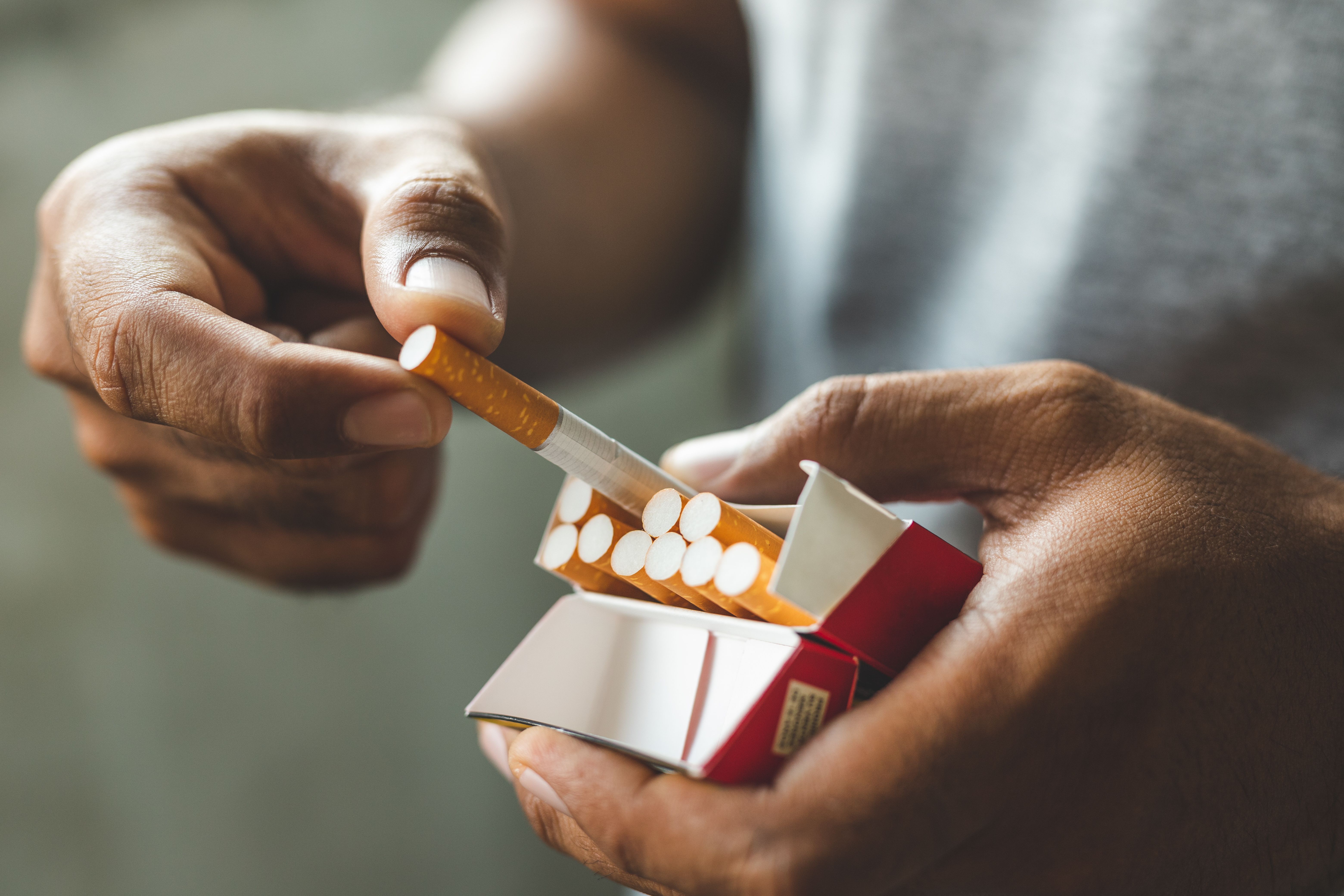- Center on Health Equity & Access
- Clinical
- Health Care Cost
- Health Care Delivery
- Insurance
- Policy
- Technology
- Value-Based Care
Surgeon General Calls for Action on Tobacco Use, Outcomes Disparities
The new report from US Surgeon General Vivek H. Murthy, MD, MBA, highlights persistent disparities in tobacco use and secondhand smoke exposure, calling for equitable strategies to achieve a tobacco-free future.
Although cigarette smoking has declined more than 70% among Americans since 1965, progress achieved through improvements in tobacco-related policies and programs varies significantly across population groups, according to a report released today by US Surgeon General Vivek H. Murthy, MD, MBA.1
In the US, cigarette smoking and second-hand smoke exposure cause nearly 1 in 5 deaths per year, accounting for over 473,000 and 19,000 deaths, respectively.2 However, some groups continue to be more affected than others.1
The new report from US Surgeon General Vivek H. Murthy, MD, MBA, highlights persistent disparities in tobacco use and secondhand smoke exposure driven by socioeconomic and demographic factors. | Image Credit: Nopphon - stock.adobe.com

Building on the 1998 Surgeon General’s report on tobacco use among US racial and ethnic groups,3 the new report determined the persistence of disparities in tobacco use and secondhand smoke exposures.1 Factors driving these disparities include income, education, and race and ethnicity. Others are occupation, geography, behavioral health status, sexual orientation, and gender identity.
The report determined cigarette smoking to be higher among American Indian and Alaska Native people, along with those who live in rural areas, have lower education levels, and identify as gay, lesbian, or bisexual. It also found that smoking is more than twice as common among Americans living in poverty, and it is more common among adults who work in manual labor and service jobs, reside in the Midwest or South, and live with a mental health condition or substance use disorder.
Disparities in smoking-related health outcomes are evident across racial and ethnic groups. For example, Black men have the highest rates of lung cancer incidence and mortality, whereas American Indian and Alaska Native adults have the highest prevalence of chronic obstructive pulmonary disease.
Multiple factors contribute to these disparities, including the tobacco industry's targeted marketing of products in neighborhoods with greater percentages of Black and Hispanic residents and those with lower incomes. Additionally, the report highlighted that the industry markets flavored products, such as menthol, to specific groups. Menthol can make it easier to start smoking and harder to quit, a challenge further compounded by some groups facing barriers to tobacco cessation treatments.
Similarly, deaths due to secondhand tobacco smoke exposure have declined by more than 50% since 2006. Still, secondhand smoke exposure remains disproportionately high among Black people, children, those with lower incomes, and adults with lower education levels. The report noted that, since 2000, the magnitude of these disparities has increased.
“Now is the time to accelerate our efforts to create a world in which zero lives are harmed by or lost to tobacco,” Murthy said in a press release. “This report offers a vision for a tobacco-free future, focused on those who bear the greatest burden and serves as a call to action for all people to play a role in realizing that vision.”
He suggested several strategies to help eliminate tobacco-related disparities, including driving down the appeal, addictiveness, and availability of commercial tobacco products. Another approach is the equitable implementation of strategies proven to reduce commercial tobacco use and secondhand smoke exposure. These include comprehensive smokefree air policies, tobacco product price increases, and effective counter-marketing and media campaigns.
Lastly, Murthy emphasized the importance of addressing the underlying factors driving tobacco-related disparities, like inequitable access to health care, high-quality education, and safe, smokefree workplaces and housing.
“We will keep working until tobacco is no longer a menace to individuals and families across the nation,” HHS Secretary Xavier Becerra said in the press release. “We will continue our efforts to improve health equity and support communities that remain the most vulnerable."
References
- US Surgeon General releases new report: eliminating tobacco-related disease and death, addressing health disparities. News release. HHS. November 19, 2024. Accessed November 19, 2024. https://www.hhs.gov/about/news/2024/11/19/eliminating-tobacco-related-disease-death-addressing-health-disparities.html
- Key findings fact sheet. HHS. November 19, 2024. Accessed November 19, 2024. https://www.hhs.gov/sites/default/files/2024-sgr-tobacco-related-health-disparities-key-findings.pdf
- Satcher D. 1998 Surgeon General’s report—tobacco use among US racial/ethnic minority groups. CDC. Reviewed July 27, 2023. Accessed November 19, 2024. https://archive.cdc.gov/www_cdc_gov/tobacco/sgr/1998/index.htm
